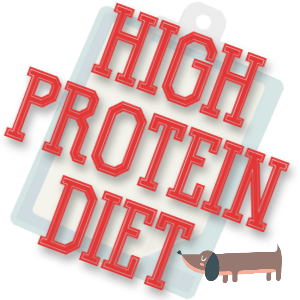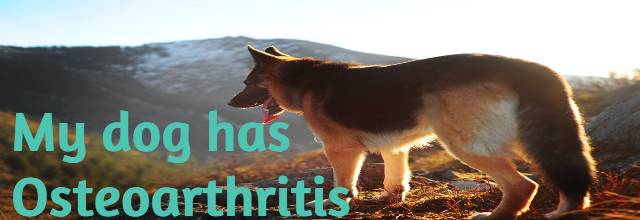
Hello again! Today, I wanted to talk about Cushing’s Disease in dogs because the symptoms can be quite confusing to many people and hopefully, I can try to clear up a few doubts you might have.
Does your dog have Hyper or Hypoadrenocorticism? Maybe you know it better as Cushing’s disease. HYPERadrenocorticism or HYPOadrenocorticism occurs when excess (hyper) or not enough (hypo) cortisol is produced by the adrenal gland in your dog. Your dog will typically have a barrel body with thin legs, a pot-bellied appearance with hair loss and rough skin. She will have changes in fat storage and you may find that wounds might heal poorly.
Dogs in this state are normally polydipsic (they get very thirsty) and polyuric (they urinate a lot and often). Too much cortisol will weaken their immune system and this will, in the long run, mean that your dog will become susceptible to other infections and illnesses.
Cushing’s can be dependent on the pituitary gland which controls hormone production, caused by an adrenal tumour or enlargement of the pituitary gland itself. It is important to note here that a tumour on the pituitary gland would be benign.

Symptoms of Cushing’s Disease
- Increased thirst
- Increased urination
- Increased hunger
- Increased panting
- Bilateral symmetrical alopecia (hair loss on both sides)
- Thin skin
- Hyperpigmentation (darkening of the skin)
- Pendulous abdominal distension
- Obesity
- Fat pads on the neck and shoulders
- Pot-bellied abdomen
- Loss of hair
- Lack of energy
- Insomnia
- Weakness of muscles
- Lack of oestrus (in female dogs)
- Shrinkage of the testicles
- Bruising
- Hard, white, scaly patches on the skin, elbows.

Causes
Cushing’s Disease isn’t always obvious at first consultation. Whilst treating other issues such as allergies or inflammation or treatment for low cortisone levels, Cushing´s can present itself.
A veterinarian will run a number of tests including one for measuring cortisone levels in the blood.
There are three of these tests:
1. A urine-cortisol creatinine ratio test
2. A low-dose dexamethasone suppression test
3. An adrenocorticotropin hormone (ACTH) stimulation test.
These tests can detect diluted urine or urinary tract infections. Also, results might show issues with a certain protein called alkaline phosphatase which can be found in the liver and in the bones. These tests will be followed by others as necessary.
- Adrenal Harmony Gold for Dog Cushings by Pet Wellbeing

- View Larger
- Description:Cushing’s Disease, Supplement for Adrenal Gland Dysfunction
- Adrenal Harmony Gold for Dog Cushings by Pet Wellbeing

- View Larger
- Description:Cushing’s Disease, Supplement for Adrenal Gland Dysfunction
Prognosis
An animal with Cushing’s Disease will have it for life and owners should be prepared to give medication during their dog’s remaining lifetime. Close observation of the animal will be required all the time and any further signs of distress immediately reported back to the vet as there may be side-effects to the prescribed medication. This likely would be Vetoryl.
Cushing Disease Dog Diet

Once your dog has been diagnosed and the relevant treatment started, you will need to take a look at her nutrition needs. Of course, the vet will guide in this aspect. A diet rich in proteins and one that is easily digestible is necessary as this will help the immune system, skin and muscle-building.
More than likely, their regular food might not be appropriate anymore and adjustments will be required. Adjustments in the food but also for your dog obviously, and for yourself by starting a new daily and shopping routine, depending on which nutrition route you decide to take, be it BARF (Bones And Raw Food) or veterinary prescribed foods.
High quality foods are necessary and one that pays special attention to the kidneys is even better. Dogs with Cushing’s have a higher risk of gaining diabetes, pancreatitis (inflammation of the pancreas), kidney stones, urinary tract infections, high blood pressure and heart problems. Those found in regular supermarkets won’t unfortunately make the grade as they contain too much fat or sodium amongst other things. Anything less than high-quality/high-protein could worsen the symptoms of the illness. It’s very important to avoid any further problems.
Cushing Disease Dog Behavior
You may well see changes in your dog’s behavior. You know how you yourself feels when you feel ill or unwell. You have less patience or tolerance for others around you, you feel sad and down, you might be in pain of some kind with no energy and no motivation to do anything.
Your poor doggie will feel some or all these things and possibly more. Aggression around food is a big thing and is connected with the endocrine system – Cushing’s plays a big role here so please don’t take it personally if your dog “tells” you to move away from the bowl! They will feel more hungry and thirsty than normal and they will want to eat and drink more, with increased defecation and urination that goes along with this.
Confusion, weakness… your dog will need your love and special attention. He/she won’t understand why they feel so bad. Increased panting (thirst or anxiety), lethargy, general getting around. Poor thing.

Dog Breeds Prone to Cushing’s Disease
Some of the breeds affected more often include:
- Dachshunds
- Poodles
- Boxers
- Terriers
- German Shepherd
- Labrador
- Maltese.
Cushing’s Disease in Dogs – Recognise the symptoms
I hope I’ve been able to give you some info so you can recognise symptoms more easily in your dogs. If you have any doubts about your dog’s health, please consult a veterinarian as soon as possible.
Does your dog have Cushing’s? If so, what was the first symptom you saw and reported? What breed is your dog? Please give your comments below and if I can help in any way, please ask me and I’ll get back to you asap!






Oh, this looks just awful. What can I give my dog to prevent her from suffering from this?
Thank you for this very informative blog post about Cushings in dogs. I have a giant schnauzer who has thyroid issues and takes meds for that every day. Its nice to know the signs of what to look for with a dog disease. We had no idea about symptoms for his thyroid disorder before we found out from the vet he had them. He could have died before we found out what to do about it. So posts like yours can really help a pet owner. Thanks again -Shirley
Very informative article with so much great information. Dogs are such great pets and friends to have, so we should always take the best care of them that we can – they deserve it. Great post!
Hi Catherine. Yes, it is awful. Unfortunately, there´s no prevention as such as each individual case is different and depends on the adrenal gland activity of the patient. Some dogs are prone to it more so than others. A vet will always advise on the best action to take. Wishing you and your dog all the best ?
Ah, thanks Shirley. I´m glad it was of use to you. I hope your dog´s thyroid issues are reacting well to medication. Take care, you both.
Thank you Michael. They deserve so much love.
I just lost my boy, Buddy he just turned 10 in July, he was my world the biggest long haired chihuahua te breeder ever had, he was 10 pounds at 6 months, he was the most loving creature I have ever met, (besides my present wife) he showed me more love than all 3 of my kids put together. I’ll miss him every day for the rest of my life. We found out he had cushi gs in the spring, he lost a bunch of hair a couple of years before that, it was just fitting, my youngest and her brother came over for there weekend at the beginning of December in 2012 Kayla was 4, she told me Santa was bringing her a puppy for Christmas and I had already turned him down 3 times, but I got him, and he died on her birthday September 29th, in my arms at home with me and my wife. ♥️
Oh Scott, I am so sorry to hear this sad news. Buddy sounds like the most loving animal you could ever have wished to have in your life. Thank you for sharing his and your story with us. And the date of his passing is certainly a sign that animals know exactly when is the right time to say goodbye😢